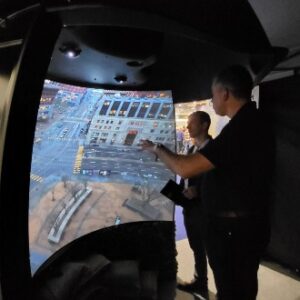Houses of worship are getting the hang of virtual ministering and gathering thanks to relatively inexpensive AV set ups
Throughout history, houses of worship have been champions of multimedia communication. Mosaics, paintings, music and even the buildings themselves have been part of the communication to the faithful. Over the centuries, people have used art and technology to express their beliefs. Churches, temples and mosques are cherished for the art they have fostered and preserved.
The COVID 19 pandemic has meant houses of worship had to find ways to worship without the house; members could not come together in buildings because of contagion. Across the world, local religious leaders have also had to learn a new skill: distance AV technology for faith.
AV collaboration tools have been employed for distance communication for decades. In this anxious time, faith leaders are compelled to reach out in any way they can to encourage their community. Zoom conferences, live streaming, Facebook live broadcasts, and many other platforms are being utilized and stretched as religious leaders begin to share ideas and tech support on how to effectively use AV collaboration tools.
Slowly, with different locations moving at different speeds, religious organizations are beginning to assemble again in places of worship. However, with the introduction of distance AV technology many houses of worship want to continue using this method to reach members who have opted to stay at home and have prioritized technological outreach.
Having a leadership staff person for digital outreach is a growing trend. At the time of this writing, Indeed.com lists 190 open positions for digital media ministry. Many houses of worship will need to supplement their AV system to incorporate distance outreach into their regular service schedule. The good news is, the technology has become easier and cheaper in the last few years.
“Streaming services have been a popular choice for houses of worship but they came with a cost, often recurring,” says Jeremy Caldera, CEO of IAS Technology. “Now Facebook Live and YouTube are free and widely available to even the smallest of churches.”
Caldera has more good news: “A professional quality AV experience can be installed in your house of worship for a fraction of what it cost even two years ago.”
HoW To
So how can the existing facility be set up to use these tools? Jay Rogina, Principal and CEO of Spinitar, has been hearing from a lot of faith leaders about this problem. He is a leader in the AV space, and knows what is needed: “Faith communities need to gather. That’s what this is about.”
Social distancing and health requirements are changing the way people gather to support one another, but the need must be met. There are five elements to adding distance communication: Internet connection, software platform, outgoing audio, outgoing video, and optionally, a system to respond to chats.
To start distance worship from their homes, religious leaders have used a computer, tablet or phone. These devices are equipped with a camera, a microphone and are connected to the Internet. These same features would need to be reproduced in the sanctuary.
Most houses of worship are already equipped with microphones and a soundboard. By bringing in an Internet-connected computer with a basic sound card, a 3.5mm connection can be used to connect the soundboard to the computer. Legrand’s C2G’s Velocity line has several 3.5mm to RCA Y-cables with lengths up to 50 feet.
To add a camera, HuddleCam’s USB 30X-G2 is a good option. These cameras use a USB connection on the same computer that connects to the soundboard. The Huddlecam comes with a remote control allowing for camera presets. Once the camera and its presets are set up, the AV tech running the soundboard can use the presets to easily change the camera view. A close shot on the main speaker, a view of the whole front area, or a view of the entire sanctuary are useful settings.
Platforms like Zoom and Facebook Live allow for real-time chat interactions. Some groups are using this as a way to create community. This is a powerful option, but some houses disable the comments to keep on top of the communication.
For this feature to be incorporated into the service real time, a person can be designated to be the chat monitor. Participants from remote areas could be invited to join in with comments, questions or prayers requests via chat. The chat monitor could use a personal device like a phone. Alternatively, the house could install a small touchscreen monitor such as the Asus VT168H or Elo E829550. This monitor can be connected to the PC with a wireless HDMI extender like the popular J-Tech HDBitT WEX200.
Rogina also has seen groups meeting safely for small watch parties, gathering to view the service broadcast and support one another. As the distancing continues, he suggests that outdoor gatherings in cars or lawn spaces could happen on campus. The leader would have a sound system to amplify the message or music. Participants could use the campus Wi-Fi to connect on their phones for a closeup of the service broadcast.
Technology is created in response to human needs. People have always needed to gather for faith reasons, and they will continue to do so. The AV integration industry has been critical to find ways to work around the pandemic and it is interesting to see how houses of worship are using and expanding this technology in new ways.
Murphy Daley PMP has been working in Unified Communications since ‘90s and is passionate about helping people overcome distance to get work done. She can be reached on twitter @writtenbymurphy.










Great article! Nice to hear an overview of how houses of worship use technology and some specific advice on what religious communities can do to stay connected.